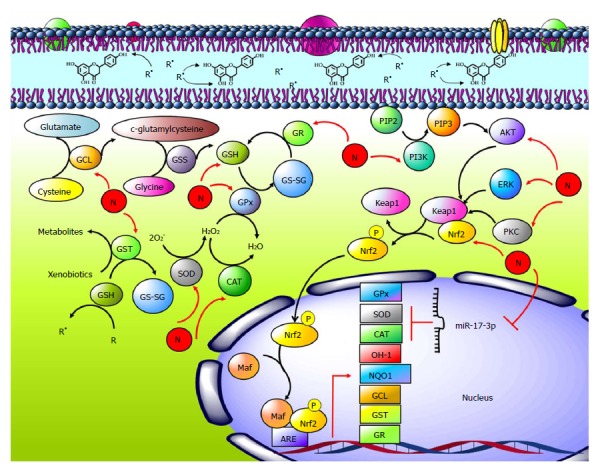Figure 4.

Antioxidant effects of naringenin. Naringenin (N) accumulates in cell membranes, where it provides rigidity to the lipid bilayer; naringenin can reduce the interaction between free radicals (R•) and the cell membrane, as well as reduce membrane phospholipid attack and prevent lipid peroxidation (LP). Glutathione (GSH) is formed when cysteine and glutamate form c-glutamyl cysteine by the enzyme glutamyl cysteinyl ligase (GCL); then, glycine and c-glutamyl cysteine form GSH by GSH synthetase (GSS). Naringenin increases GCLC protein and mRNA levels as well as GSH levels. Naringenin increases activity and protein and mRNA of superoxide dismutase (SOD), catalase (CAT), glutathione peroxidase (GPx), glutathione transferase (GST) and glutathione reductase (GR), enzymes that are part of the endogenous antioxidant system. Naringenin decreases the expression level of miR-17-3p; its targets genes are SOD and GPx. The nuclear factor-erythroid 2-related factor 2 (Nrf2) is an oxidative stress regulator; it stimulates antioxidant enzyme expression as well as heme oxygenase (OH-1) and NADPH quinone oxidoreductase (NQO1). Naringenin upregulates the Nrf2 pathway by increasing its activation, nucleus translocation, and protein and mRNA levels through PI3K/AKT, ERK and PKC.
